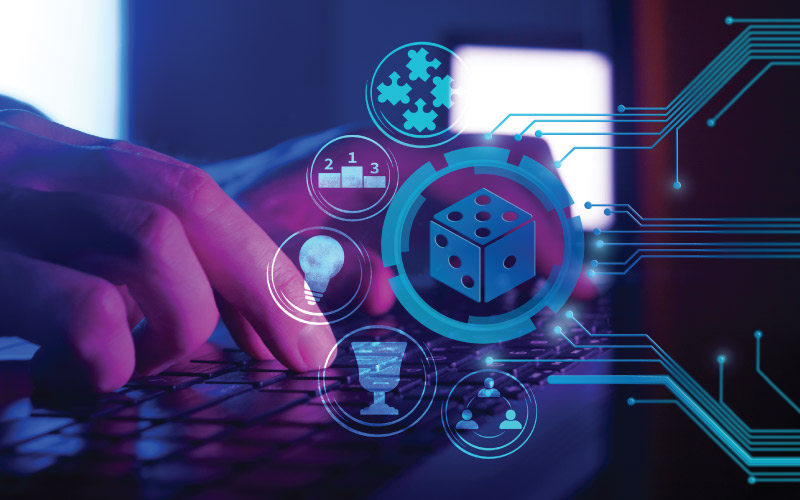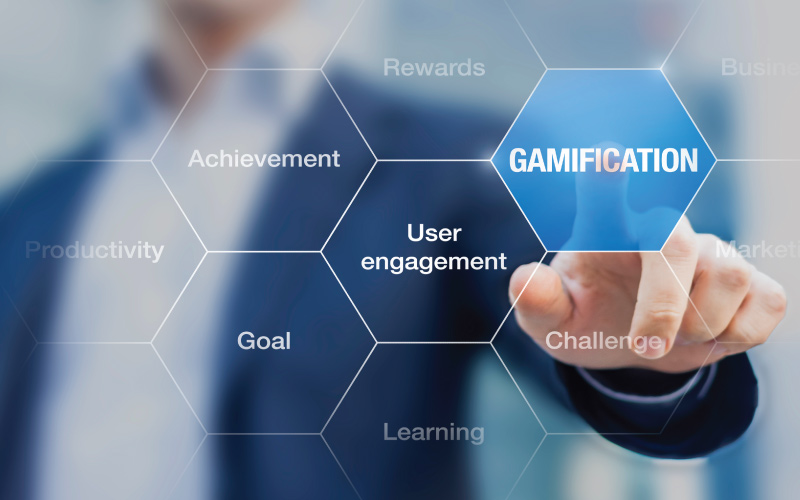Agile Gamification In Learning And Development

Agile gamification is no longer an alien concept in the IT industry. Considering its significant benefits, such as increased engagement and productivity, more and more organizations are adopting the gamification technique for project development.
In this blog, we will look at how agile gamification can help with learning and development. We will also discuss the five major advantages of agile gamification that make learning more efficient.
We are hopeful that this information will help you enhance your understanding of gamification in agile development.
What is Gamification?
Gamification can be defined as applying gaming practices and principles to non-gaming environments, such as a workplace, in an attempt to influence people's behavior and increase productivity, engagement, fun, etc.
In other words, gamification is an attempt to create an ecosystem in which participants experience the same thrill, joy, and motivation that they do while playing games. This concept aims to improve engagement, fun, learning, etc.
It is important that we understand that ‘gamification’ and ‘game design’ are completely different concepts. It is about wisely choosing few elements of the games that you enjoy, such as challenges, competition, feedback, and so on.
Some of the basic gaming elements of gamification include points, badges, leaderboards, performance graphs, meaningful stories, avatars, and teammates.
Gamification in Agile
Gamification in agile is a technique of using gaming principles and mechanisms in the agile software development process to boost team engagement and instill desired behaviors in team members in a light manner. Besides that, in agile gamification, employees or players are rewarded with badges and game points for successfully completing a specific task.
In addition to points and rewards, other gamification elements that can be used in agile gamification include leaderboards, performance graphs, meaningful stories, avatars, and more. To summarize, this approach seeks to make the software development process more engaging and enjoyable while keeping the objectives the same.
Gamification in Scrum
Just like gamification in agile, you can also perform gamification in scrum. Scrum gamification can be implemented using a scrum project management tool such as Jile. To begin scrum gamification, select a game or define the behavior of each scrum team member. However, keep in mind that employees' behavior must be consistent with their goals.
You can also modify the gaming concept or principles to meet your specific needs. There is no hard and fast rule requiring you to follow the same rules of the original games. Once the behavior and objectives have been defined, run the program and track its progress. Also, assign reward points and badges to team members based on their achievements.
Here are some scrum agile gamification examples:- Lego4Scrum
- The Product Owner Game
- Scrum Knowsy
- The Scrum Board Game
What are the Benefits of Agile Gamification in Learning and Development?

Following are few benefits that explain how gamification helps in agile learning and development:
A. Facilitates Behavior ChangeGamification uses extrinsic motivation elements such as rewards, points, fame, and incentives to change the behavior of employees. This behavior change is driven by external rewards that are tangible in nature.
Extrinsic motivation plays a crucial role in determining or driving employee behavior or actions. By carefully assessing their needs, management can offer extrinsic rewards to their employees through a gamification program.
B. Makes Learning Fun and InteractiveThe next benefit of agile gamification is that it makes learning more enjoyable and immersive. The management can introduce the appropriate set of games, game mechanisms, and game elements to motivate all employees to participate and give their best.
Furthermore, they can provide rewards for specific accomplishments such as completing a task, discovering a bug in the system, or closing a sales deal. These extrinsic rewards will motivate employees to go the extra mile and give their best to the team and the organization.
C. Improves Cognitive PerformanceThe use of gamification in the workplace will also help to improve the cognitive performance of each individual or participant. Incorporating brain games into agile software development may help optimize the brain's ability to process new information.
It's also worth noting that the human brain processes information in working memory through visual and auditory channels. That is, when information is presented through both channels, the brain, i.e., working memory, has more capacity to accommodate new information. Overall, agile gamification will make the workforce sharp and intelligent.
D. Fosters Innovation at the WorkplaceThe fourth advantage of gamification in agile is that it fosters workplace innovation. Understandably, incorporating games into the workplace, in addition to extrinsic rewards, will motivate the majority of employees to be engaged completely. In the hopes of winning the rewards, employees will openly share their ideas and go above and beyond to complete the task.
Enhanced employee engagement and knowledge sharing will certainly make the workplace more creative. Additionally, by gamifying the agile development process, organizations will also be able to engage those learners who are extrinsically motivated to complete the tasks.
All these agile gamification elements contribute to a more fruitful and result-oriented learning and development experience.
Agile Gamification– FAQs
What are the different types of gamifications?The two main types of gamification are structural gamification and content-based gamification.
What is the purpose of gamification?The objective of gamification is to foster customer engagement, employee engagement, and partner engagement for them to collaborate. The purpose, however, can vary depending on the setting or industry.
What is an agile gamification technique?Agile gamification is a technique in which gaming elements and gaming principles are introduced into non-gaming settings to drive desired behavior and improve engagement, fun, and learning.
What is extrinsic motivation in gamification?In gamification, extrinsic motivation is the desire to achieve something or complete a task in exchange for rewards such as money, points, badges, etc.
What are the three elements of gamification?The three most common gamification elements are points, badges, and leaderboards.
Thanks for subscribing to our latest blogs, thought leadership and other product updates!
Read our Privacy Notice to know more. You can opt-out of all communications anytime.
